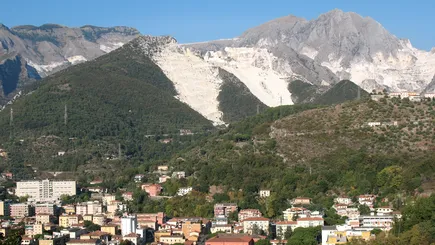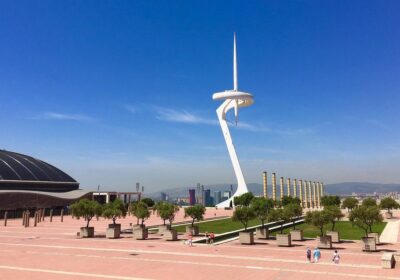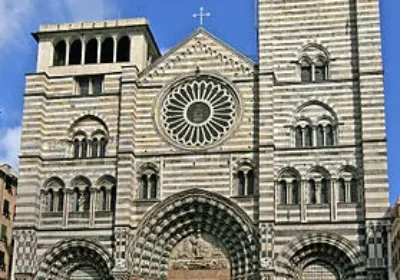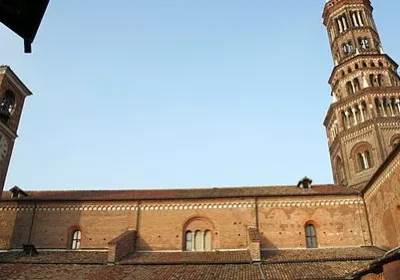The tour begins in the town of La Spezia.
The Quarry is the Celtic name of the Italian town of Cararra, which is surrounded by the Aluan Alps, striking for the beauty of the white marble of which it is composed. The population is just over 65,000.
The cathedral square, designed in the shape of a trapezoid and surrounded by medieval buildings, is the central historical site of the town. The Cathedral, with its unusual openwork in white marble, is the centrepiece of the city’s history. It’s worth getting inside to see the beautiful architectural delights, including a wooden cross with a crucifix made by Angelo Puccinelli and his sculpture of the Annunciation, also dating from the 14th century. The Piazza is also attractive for the house near the Cathedral where Michelangelo lived, which is commemorated by a marble plaque. The Cathedral Square is also famous for the unfinished statue of the Giant by Baccio Bandinelli, who intended it as a representation of the god Neptune.
The expensive and unusual Carrara white marble is famous throughout the world. Famous sculptors of the Renaissance and Baroque eras created real masterpieces from it, including the statue of David, the Pieta composition, and the sculpture “The Abduction of Proserpina”.
Carrara marble has been used to build structures in many countries around the world. Among the famous Marble Arch that adorns Haydn Park in London, the Cathedral in the capital of the Philippines, the amazing Mosque of snow-white marble, striking splendour in Abu Dhabi. Carrara marble was used in the construction of the Hindu temple complex in Delhi, also the memorial made in honour of Edward VII, King of England, the Monument to Peace in Washington.
Carrara marble is widely used to furnish modern interiors. It is used to make products ranging from tiles, wall and floor finishes to furniture. Its popularity is due to its aesthetics, durability and environmental friendliness.
You will drive through marble tunnels and visit the centre of the mountain, where marble is still being extracted today.
An open-air museum will tell you how the methods of marble extraction have changed since the Etruscans.
Then you will visit a town called Colonnata. It was first mentioned in 40 BC. Here you can taste Italy’s most famous lard – lardo di Colonnata. It is salted in marble baths. The owner of the shop will gladly share with you the secrets of making lard.
And finally, the local souvenir shop. It is impossible to leave here empty-handed. All kinds of marble products will leave no one indifferent.

















